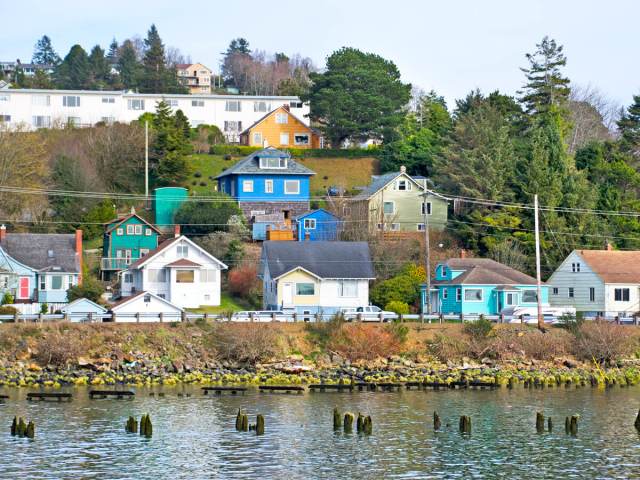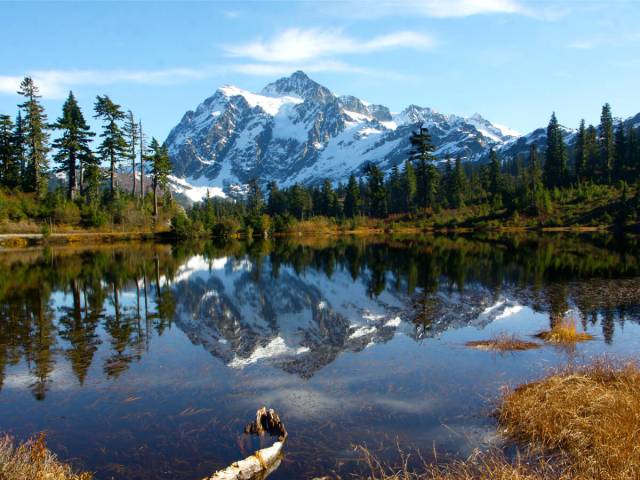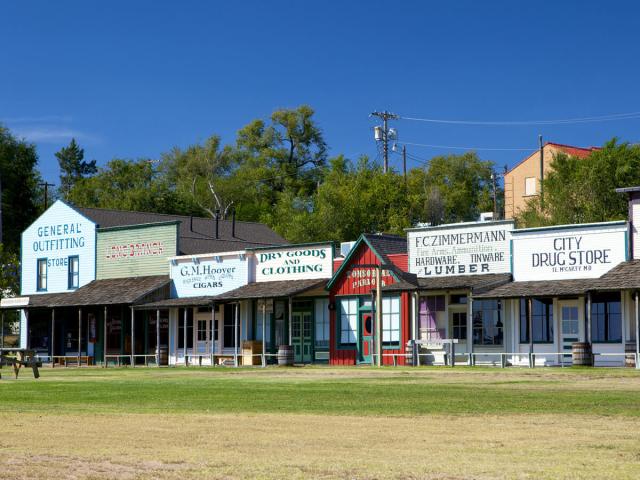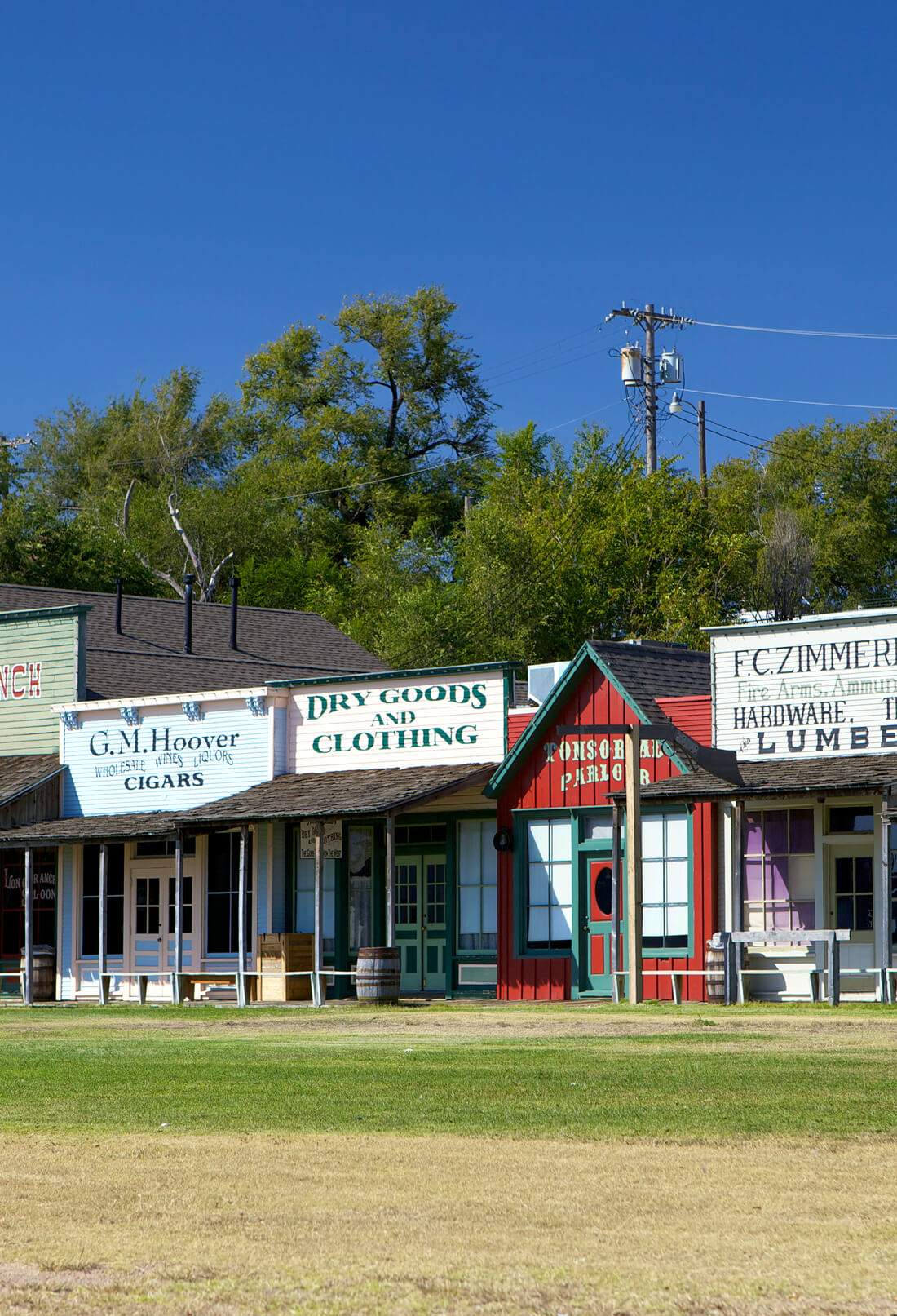From early colonial history to pivotal battlefields and presidential landmarks, the U.S. is filled with endlessly fascinating historical places. But if you’ve already checked the most famous landmarks off your list, you may be wondering where to head next. Look no further. The following places — though unexpected and well off the beaten path — all played a key role in the growth of the nation and make great getaways for history hounds. Skip the crowds and explore six under-the-radar cities that U.S. history buffs will love.
Astoria, Oregon

The famed expedition of Lewis and Clark, officially known as the Corps of Discovery, began in St. Louis in 1804 and headed west. President Thomas Jefferson tasked the explorers with mapping the western territory all the way to the Pacific Ocean — and what would become Astoria is where they ended up. The expedition built Fort Clatsop near the mouth of the Columbia River when they arrived in December 1805, which got them through two winters before heading back east. Located in and around modern-day Astoria, the Lewis and Clark National and State Historical Parks feature a re-creation of the small fort and chronicle this hugely consequential exploration mission.
The city Astoria also has a fascinating history of its own, highlighted at the Astoria Column, a towering hilltop monument with murals depicting area history and panoramic views. The Columbia River Maritime Museum showcases the city’s fishing, shipping and military history in a waterfront building. Meanwhile, set in a Queen Anne–style Victorian mansion, the Flavel House Museum features period furniture amidst impeccably manicured gardens.
Durango, Colorado

Fans of both Native American and Hollywood history will find much to love in the Colorado mountain town of Durango. The area’s ancestral Puebloans (or Anasazi) peoples initially settled the area, but they mysteriously vanished from the Four Corners region around 1300. Today, Mesa Verde National Park, established in 1906, features thousands of archaeological sites and ancient Anasazi cliff dwellings. As the closest modern town, Durango serves as an unofficial jumping off point for area tourism, and it has some western history of its own — both real and cinematic.
The small Colorado city is particularly known for the 19th-century Durango and Silverton Narrow Gauge Railroad. The steam train hugs mountainsides and rolls through canyons today as a tourist attraction, but it originally hauled gold and silver ore that helped build the city and the nation. Today, the Railroad Museum in town displays restored locomotives. Several popular Hollywood hits were also made in Durango, including Butch Cassidy and the Sundance Kid, City Slickers, and How the West Was Won.
Tenino, Washington

When the only bank in tiny Tenino, Washington, closed during the Great Depression, Don Major, the publisher of the county newspaper, went to the city council with an idea — to issue the townspeople a temporary scrip in order to facilitate transactions in the community. Many cities and towns across the U.S. ended up employing similar concepts, but Major’s faux money — thin spruce strips laminated on either side of a piece of paper — became popular collector’s items outside the town. The Tenino Chamber of Commerce is said to have issued more than $10,000 worth of the wooden currency over the next several years as requests from collectors came in. The refurbished original Chandler Price printing press still runs once a year to make souvenirs for the city’s annual Oregon Trail Days celebration, which this year takes place from July 26 to 28.
Bartlesville, Oklahoma

In Bartlesville and neighboring Tulsa, Oklahoma, architecture buffs will find some of the best-maintained examples of mid-century and Art Deco architecture and design in the country, including several homes and buildings by famed architect Frank Lloyd Wright. In fact, Wright’s only cantilevered skyscraper is in Bartlesville, which is also home to the Frank Lloyd Wright-inspired Bartlesville Community Center, as well as multiple Bruce Goff houses and his Redeemer Lutheran Church Education Building.
If you plan a June trip to Bartlesville, you can take in the city’s classical OK Music Festival. In Tulsa, check out the central Deco District, where landmarks like the Philcade and Philtower buildings exemplify the style — as well as the history of the city’s oil-baron building boom. More culture and local history await at the Philbrook Museum of Art — housed in an Italianate villa that was the former home of a local oil magnate — and the Gilcrease Museum.
Dodge City, Kansas

Dodge City is an epicenter for western history hounds on the trail of the Old West and vestiges of cowboy culture. The southwest Kansas town, founded in 1872 during the Wild West heydey, was known to harbor a rough-and-tumble clientele of cattle-driving cowboys and legendary lawmen. Things are quite a bit more toned down today, but shootout reenactments and rodeos are vibrant parts of the community that remain proud of their roots. Visitors can discover more about Dodge City’s frontier history at the Boot Hill Museum.
Elsewhere in town, the Gunfighters Wax Museum features life-size sculptures of legendary and notorious western figures, among them Wyatt Earp and Sitting Bull. The Mueller-Schmidt House Home of Stone Museum retains its original 1880s furnishings — which occupy the parlor, kitchen, and bedrooms — are on view during tours from June through August.
Montgomery, Alabama

As the setting of two hugely important events in U.S. history, you simply can’t ignore the importance of Montgomery as a link to the nation’s past. It was here that Jefferson Davis took the oath to become the first and only president of the Confederacy. It is also where Rosa Parks refused to give up her seat at the back of a bus in 1955.
The latter history is on display in Alabama’s capital, in the form of the Civil Rights Memorial fashioned from gleaming black granite. The monument is on view adjacent to the exhibition center, which further details the commemoration of the civil rights movement. Other important nearby sites in town include the Dexter Avenue Baptist Church, a hub for the bus boycott where Martin Luther King, Jr., preached. Displays of fine porcelain American and African art are housed at the Montgomery Museum of Fine Arts, located east of downtown.
More from our network
Daily Passport is part of Inbox Studio, which publishes content that uplifts, informs, and inspires.
















